The phrase “consumerization of IT” covers the use of technology in an everyday, consumer-oriented context. Ease of use, added value and the simplicity of an exchange of content ensure that this technology is inextricably connected to our personal lives, at home and at work. Experience gained at home with new technology is introduced into the work environment in a simple way, and stimulates innovation. As a result, new ideas are generated, and these lead to better work processes and higher productivity. These new digital strategies have an impact on the relationship between business and IT, which requires a new attitude on the part of the CIO. No longer are IT governance and control the only relevant factors, but the democratization of the work environment and the adoption of new technology also provide opportunities for the organization to advance further. There is a need for a different ecosystem that facilitates the incorporation of new technology and in which the user fulfils a central role. Agile IT for consumer-driven mobile strategies has arrived.
Introduction
“Work is the brief period during the day when I use old technology.”
(Peter Hinssen)
Can you remember when IT departments were considered to be trendsetters in adopting new technologies? In the past, the IT organization had a decisive say in the acquisition and adoption of new technology. Its application in a domestic environment often only followed a successful introduction of technology in the government or trade & industry sectors. That has changed. New technologies are filling the living room rapidly and the speed with which they take possession of the workplace seems to have caught many companies by surprise. It presents companies with a range of new challenges in adapting to this very rigorous pace of change driven by the adoption of new technologies.
Consumers have much more choice, opportunities and flexibility in the technology they use in their everyday lives, ranging from powerful mobile devices, computers and cloud-based services (such as online photobooks), to the social networks they use to contact others. They want to have access to the same tools in the workplace. The boundaries between the use of technology at work and in their private lives are getting more and more blurred.
The “consumerization of IT” (CoIT) is the phenomenon in which new information technology is first adopted into the consumer market and then migrates to the business world. Some of these consumers, the “technologically savvy,” force the adoption of this new technology into the business environment ([Forr11a]). The vanguard of this movement often consists of young, experienced, influential, and highly educated employees.
CIOs must exploit this trend in a more flexible way, allowing employees to introduce technology into the workplace. This demands an adaptive approach on the part of the CIO, who facilitates the use of technology within the margins of risk-conscious management. The result is a challenging, innovative working environment.
The rise of “new technology”
Recent KPMG research ([KPMG12]) on new disruptive technological innovations among 668 global technology leaders, from ten of the most innovative countries, studied which new technologies were regarded as “enablers” or “drivers” of business transformation.
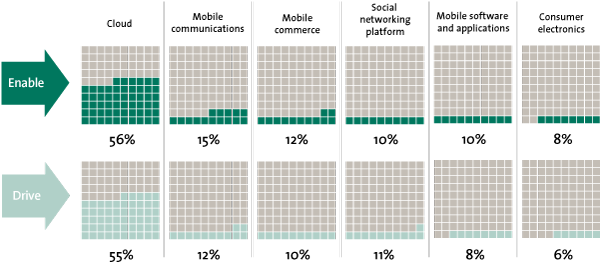
Figure 1. Selection of the top two technologies that make the following indispensable consumer technology possible, and will be the greatest stimulus for business transformation in the coming three years ([KPMG12]).
When asked for their personal selection of the two most important technologies, half of the respondents mentioned the cloud as the greatest technological enabler of technology transformation. Mobile technologies were mentioned even more frequently and in multiple forms. Three developments were considered to be extremely important:
- The breakthrough of smartphones and tablets was the most frequently mentioned top-technological breakthrough, followed by cloud computing and storage. The greatest transformatory effect was expected from a combination of both aspects. Mobile internet linked to the cloud is a very powerful enabler of new business models.
- Manufacturers of mobile devices were appraised as having a higher rank in the field of technological innovation than innovative enterprises from other company sectors.
- The rise of internet companies such as Amazon and Facebook was key in the field of mobile commerce.
If we take the adoption of mobile devices as an example of the trend for CoIT, how far has this adoption (revolution) advanced? In 2012, 675 million smartphones, 116 million tablets and 341 million PCs were sold worldwide. It is expected that the sales of smartphones in 2013 will have risen to 1 billion and in 2017 468 million tablets will be expected to be sold and the sale of PCs will have decreased to 272 million units ([Gart13]). A large number of smartphones and tablets will find their way to the workplace. This will ensure, among other things, that the number of apps used within a company will increase. The number of apps available in the largest app stores, Applestore and Google Play, is currently 1,250,000, from which the Applestore apps alone generate a turnover of 5.5 billion dollars ([Tech12]).
In 2011, Citrix had an international study performed by the Vanson Bourne Research Agency. This research showed that the private device that is most frequently used at work is the laptop: in 38% of the organizations, at least one private laptop is used, but this percentage will soon begin to decline. In contrast, the use of private tablets will triple in relation to current use (see Figure 2) ([Fran11]).
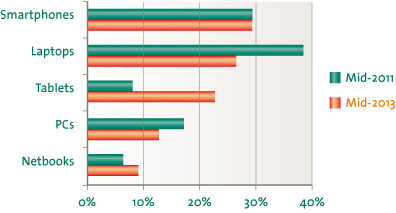
Figure 2. Private devices of employees ([Fran11]).
Due to the uncontrolled growth in the use of smartphones and tablets, it is important for companies to develop a policy covering the use of these in the workplace. At present, only a limited number of organizations and companies have formulated official guidelines in this area: many employers indicate, however, that they do feel it’s necessary to develop guidelines in this area.
Research by Trend Micro ([Tren11]) demonstrates that there is a major difference among various business sectors with regard to “Bring Your Own Device” (BYOD) policy. The most “consumerized” sectors are education (80%), healthcare (69%) and IT services (67%) (see Figure 3). Trade & industry (48%) and the government (39%) score much lower in the application of BYOD. In contrast, medium-large companies score higher in adopting this trend.
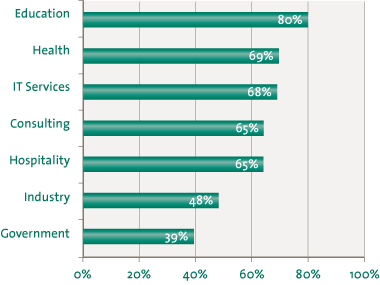
Figure 3. Adoption of BYOD per business sector ([Tren11]).
How is the new technology being used?
It is no longer a question of whether or not new mobile technology is being used, but rather of how it is being used. Several studies have shown that employees do not allow workplace regulations to determine whether or not they use their own devices for their work. Studies among business and IT professionals have indicated that tablets are used at 72% of the companies examined, although they have not been made formally available by the employer ([Dime11]).
The latest generation of employees has been raised with the internet, and increasingly maintains an “on-demand” attitude in which business and personal activities blend in the workplace. 70% pay no attention to IT regulations, and thus form a growing IT security risk. 61% believe that they are not responsible for the security of information and devices. They hold the opinion that this is the task of the IT unit and/or service provider ([Cisc11]).
The mobile resources applied are primarily used to read (e-mail) messages and to search for information on the internet. Little research has been performed into the business applications especially developed for these devices. According to research performed by SAP, most SAP users are interested in mobile functionalities such as time registration (21%), approvals (20%) and stock management (15%). In conclusion, they mention the importance of consulting and analyzing financial data (BI) via mobile devices (10%) ([SAP12]).
New areas of concern
The pace of innovation is often high when organizations start deploying a new IT environment supporting mobile technology (“app platform”). New mobile application ideas are realized in short cycles and tested in a practical pilot situation. This frequent delivery causes greater pressure on the existing IT organization.
The introduction of the new app platform also brings with it new areas of concern for the IT organization:
- The security and privacy of data that becomes available on mobile devices.
- Mobile device management of the various mobile platforms and devices.
- Mobile application development, with special attention to user interface design (touch) and other styles of development (task-oriented, many releases, Agile).
- Return of the rich and offline client in contrast to the “thin client” solution known from the web environment, through the support of device functions (such as camera, location, movement sensor) and integration with the services available in the cloud.
The adoption of this technology, driven by the consumer sector, makes new demands on the expertise and function of IT units.
Decision making regarding the application of new techniques
A practical example known to many IT organizations is the case in which one of the directors, with a new iPhone in hand, comes asking why he or she cannot yet receive company email, whereas a friend can do so without any difficulty.
The underlying picture of key figures who prompt changes within the business environment, on the basis of technological experience gained in the personal sphere, has been studied by Forrester ([Forr11a]).
The director to whom we just referred is a typical “highly empowered and resourceful operative,” or HERO. This director feels more empowered than other employees within the organization to solve organizational and client-related issues with the aid of technology.
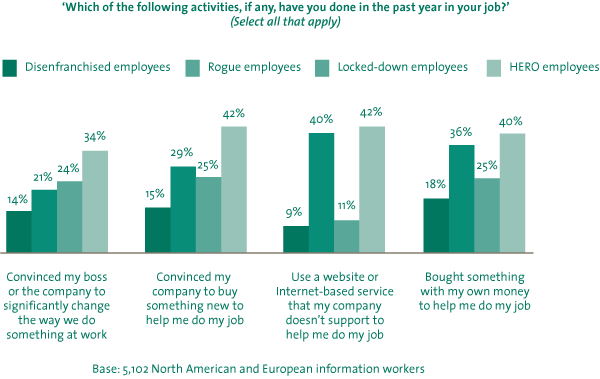
Figure 4. HERO employees are a driving force behind the adoption of changes and improvements to working methods ([Forr11a]).
The number of HEROs in a company strongly depends on the culture of the country in which the company is located (for example, 20% is considered to be a HERO in the United States, as opposed to only 11% in Germany), the business sector in which the company is active, and the role of the company (among general management and IT, it is high; in executive administrative roles, it is low). In addition, there also seems to be a generation difference: in the age group of 18 to 31 years (generation Y), the number of HEROs is significantly higher than in other age categories. At the same time, a difference in experience is evident among the information workers studied: employees who are often engaged in teleworking or use several collaborative tools feel more empowered. The rise of these young and experienced information workers means that a faction with increasing clout has arrived on the IT decision-making scene. These information workers feel comfortable with the use of the new accessible technology that is available on their mobile devices in such a well-integrated way.
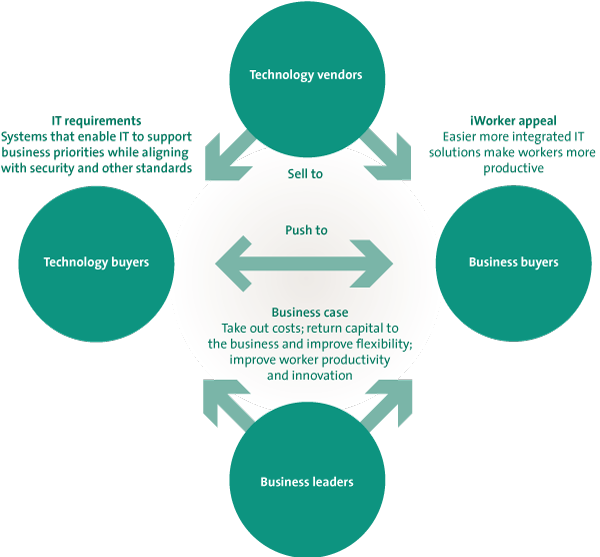
Figure 5. Information workers are a new offset market for entrepreneurial technology ([Forr11b]).
Technology suppliers influence both the IT purchasers and businesses (with their HEROs at the forefront) to an increasing degree. The functionality of the mobile platform (devices and apps) continues to grow, and new and more (technologically) experienced generations are joining the ranks of the employed. This seems to be an irreversible trend that must be taken into account in the decision-making processes concerning IT.
New organizational conditions regarding the support of new technology
The most frequently discussed topic in CIO surveys is the adoption of new technological developments in combination with cost savings and the streamlining of operational processes ([KPMG12]). In practice, the increasing adoption of new technology shows that these aims are sometimes identical:
“After all, one FTSE 100 organization reported a 20% drop in helpdesk support calls after it had rolled out BYOD, attributing most of this reduction to users being much more familiar with their devices, thus cutting the number of ‘how to’ calls.” ([BCG12]).
The IT organization learns from the adoption of new technology that is often championed by well-informed users. It shows that, in radically simplified terms, IT moves at one of two different speeds in the organization, based on its services portfolio and approach: “industrial speed IT” or “digital speed IT” ([BCG12]).
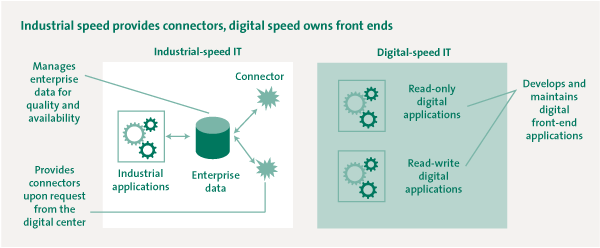
Figure 6. Industrial and digital speed IT serve different goals ([BCG12]).
Industrial speed IT primarily serves an “old world” in which mature technology must be supported for the long term. It is a world in which implementing adaptations to systems is measured in release cycles of six to twelve months. There is a clear distinction in function between the business analysts, who are charged with determining the requirements, and the developers, who deal with the technical implementation.
Digital speed IT is more oriented toward supporting the (most) recent digital revolutions. It serves a world in which changeable technology is implemented in short implementation cycles. Self-organizing (Agile) teams are used to produce the latest release of the software. These teams are manned by generalists who have a good knowledge of the current state of the art in technology.
Each approach operates within its own environment:
- predictable versus unpredictable,
- stable versus unstable requirements,
- set in organizational silos versus collaboration-oriented,
- stable technological environment or vigorously developing technological environment,
- IT behind the wheel versus participation of IT in a changeable ecosystem of stakeholders.
Conclusion
With the proper support, IT can embrace CoIT, if a keen eye is kept on risk management and applicability. CoIT should be used as a catalyst for innovation, and the experiences of end users can be adopted to support the new technology within the organization. By offering end users the opportunity to stimulate innovation through inputting their own knowledge and technology, you can ensure that consumerization will benefit your company.
References
[Ave12] Avanade, Global Survey: Dispelling Six Myths of Consumerization of IT, January 2012.
[BCG12] Antoin Gourevitch, Benjamin Rehnberg and Jean-François Bobier, BCG Perspectives, The Boston Consulting Group, Two-speed IT, a linchpin for success in a digitized World, 2012.
[Cisc11] Cisco Connected World Technology Report, 2011.
[Dime11] Dimensional Research, Enterprise iPad and Tablet Adoption: a survey, May 2011.
[Forr11b] Forrester, Information Workers Are A New Buying Center For Enterprise Technology, August 2011.
[KPMG12] KPMG Technology Innovation Survey, 2012.
[Micro11] Microsoft Corporation, Strategies for Embracing Consumerization, April 2011.
Other sources/details
[Forr11a] Forrester, How Consumerization Drives Innovation, http://blogs.forrester.com/ted_schadler/11-06-17-how_consumerization_drives_innovation, 17 June 2011.
[Fran11] Frankwatching, Bring Your Own Device, http://www.frankwatching.com/archive/2011/09/27/bring-your-own-werknemers-maken-de-dienst-uit/, September 2011.
[Gart13] Gartner Says Worldwide PC, Tablet and Mobile Phone Combined Shipments to Reach 2.4 Billion Units in 2013, http://www.gartner.com/newsroom/id/2408515, April 4, 2013.
[SAP12] SAP, Apps onmisbaar voor bedrijfsleven, http://www.sap.com/netherlands/press.epx?PressID=18860, 1 May 2012.
[Tech12] Techcrunch, Apple App Store Hits 650,000 Apps, http://techcrunch.com/2012/07/24/apple-app-store-hits-650000-apps-250000-designed-for-ipad-5-5b-paid-out-to-devs/, 24 July 2012.
[Tren11] Trend Micro, Consumerization Report 2011, http://bringyourownit.com/2011/09/26/trend-micro-consumerization-report-2011/, September 2011.




